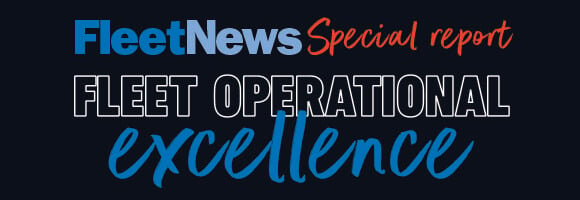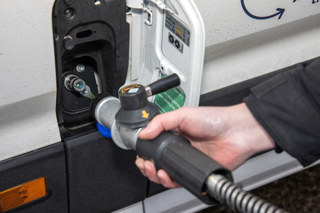This feature was taken from our special Fleet Operational Excellence report

Although fleet management technology is well established, there are still many fleets out there continuing to gather data on paper.
But acres of spreadsheets are neither an efficient nor financially viable use of a fleet manager’s time.
The driving force behind best practice in fleet management is corralling disparate sources of live, dynamic data into a central online point so that fleets have a holistic view of their drivers, vehicles and how the two interact, all in a standardised format.
Spreadsheets of historic, static data do not do that – technology can.
Telematics, maintenance history, fuel card transactions, MOT and service reminders, exception reporting, driver vehicle checks, camera records – whether forward-facing or in-cab, the volume of data can be gargantuan, a quantity that can be exacerbated by having several suppliers.
It is no easy task. But the need to master it is incontrovertible; it is a legal, moral and commercial responsibility.
“Fleet managers want strategic insights to improve operational efficiency, manage compliance and achieve the business objective,” says Richard Evans, sales director at Jaama.
A first step in the direction of ‘nirvana’ is to find a fleet management system to gather together the information. There are several points to consider before committing to this.
■ First, create a data strategy. To do that, understand what data you need to steer your fleet operationally and strategically, then find partners to provide that and make sure you can aggregate their data easily; otherwise, there is a risk of being blinded by data. “Focus on the pain points and consider opportunities to palliate those through new technology solutions,” says Evans.
■ “Outsource the heaving lifting, but keep the strategy, data and what you want to do with the fleet internally. Don’t rely on the leaseco to give you the strategic advice while you do the heavy lifting, that’s the wrong way around,” says Paul Hollick, chair of AFP (the Association of Fleet Professionals).
■ Ask whether your potential providers have access to application programming interfaces (APIs). These facilitate integration of live data from a number of systems into one place, allowing you to respond speedily to potential problems. “More and more vendors are offering API integrations to give immediacy of data so that, instead of waiting for the fuel card bill, you get it live,” says Stephen de Launay, global product evangelist for Chevin Fleet Solutions. Telematics, for example, has always had API integration, ensuring fleet managers know in real time when a dashboard warning light comes on.
■ Ask whether the supplier’s system is legacy, i.e. updated by provision of new software every three-to-six months, or software as a service (SaaS), which is cloud-based and gives direct access.
■ “Choose a provider that is industry-led. Fleet is a fast-moving industry; at Chevin we meet customers regularly to learn their challenges and we develop products based on that information,” says Richard Clark, global head of product at Chevin. “If software is client-led, it is a one-off for the company and evolves only with that client, not with the industry.”
Driver and vehicle safety
Maintenance, services, MOT, tyre checks – all these things can, and should, be recorded by the driver and sent straight to the fleet manager via smartphone technology and apps, which are easy to institute and simplify onerous tasks. It is an easy entry point for companies.
Driver access by password ensures fleet managers can audit daily vehicle checks and giving apps to grey fleet drivers brings them into the fold. This will also highlight exceptions to policy – overdue services, etc.
Similarly, mileage tracking and fuel economy – of either drivers or vehicles – draws attention to the need for replacing vehicles or training drivers; this is particularly important with ever-ageing fleets on the road.
Where checking vehicles between services was not necessary a decade ago, with longer service intervals and older vehicles in fleets, it has become a must.
“We work with organisations to track defects so they are properly managed; they have a duty of care to do this,” says FleetCheck founder and managing director Peter Golding.
“This can be combined with whether an MOT or service is due, in response to advisory notifications from a garage.
“Responsibility for those vehicles does not sit with the manufacturer nor with the leasing company, it is with the company that employs the driver.
“Gone are the days when you can put the onus of responsibility onto drivers to book a vehicle in; it categorically isn’t. The adoption of technology has been slow, but it has been accepted as organisations have understood the benefits.”
Even people who organise their lives on their mobile are often reticent about introducing technology to run a fleet, usually due to a perception it will be complicated to use.
This is exacerbated by the fact that most companies are already paying for Excel and buying software involves a new investment, even though it can be relatively small.
This is particularly true of businesses where fleet is managed by finance. “Excel is good for financial calculations and doing analysis of funding, but it is not a robust way of managing a fleet,” says Golding.
There is also still a myth that fleet management software is most suited to large fleets, but Golding set up FleetCheck for SMEs and then acquired larger fleet clients.
Once organisations have invested in fleet management software, they do not move away from it.
But Golding warns: “Companies usually become aware of the Health & Safety at Work Act 1974 and duty of care when something goes wrong and suddenly they urgently want to get their records in place; that’s a bit late.”
Expense management
The increased costs of running a fleet are driving the need for introducing controls, which is not possible without good record keeping.
All roads lead to automation, and technology allows fleet managers to see clearly the total cost of ownership, including fuel consumption, maintenance, reliability and much more; driver and vehicle data provides evidence.
“With operational excellence, fleet managers can challenge the data. If maintenance spend is low on a vehicle, they can go back to their contract hire company and discuss extending some vehicles, returning others, or maybe negotiate pooled mileage,” says de Launay. “With tangible data, you can manage elements such as vehicle replacement and programmes.”
Fleet managers should be working towards the business objectives to help drive fleet efficiencies, and technology is the most effective and efficient way to do that. For companies that do not even have a toe in the water, there are easy ways to start.
By Catherine Chetwynd
Boost efficiency, cut costs and improve compliance across all areas of your business with the Fleet News Operational Excellence report.
Delve into crucial topics for effective fleet management, including electrification, digitalisation, alternative funding, and compliance. To give you an edge, we've gathered insights from top industry experts who reveal their best practices and innovative strategies.
Dive into these highlights and read the full report to unlock the secrets of running a more efficient and effective fleet operation.




















Login to comment
Comments
No comments have been made yet.